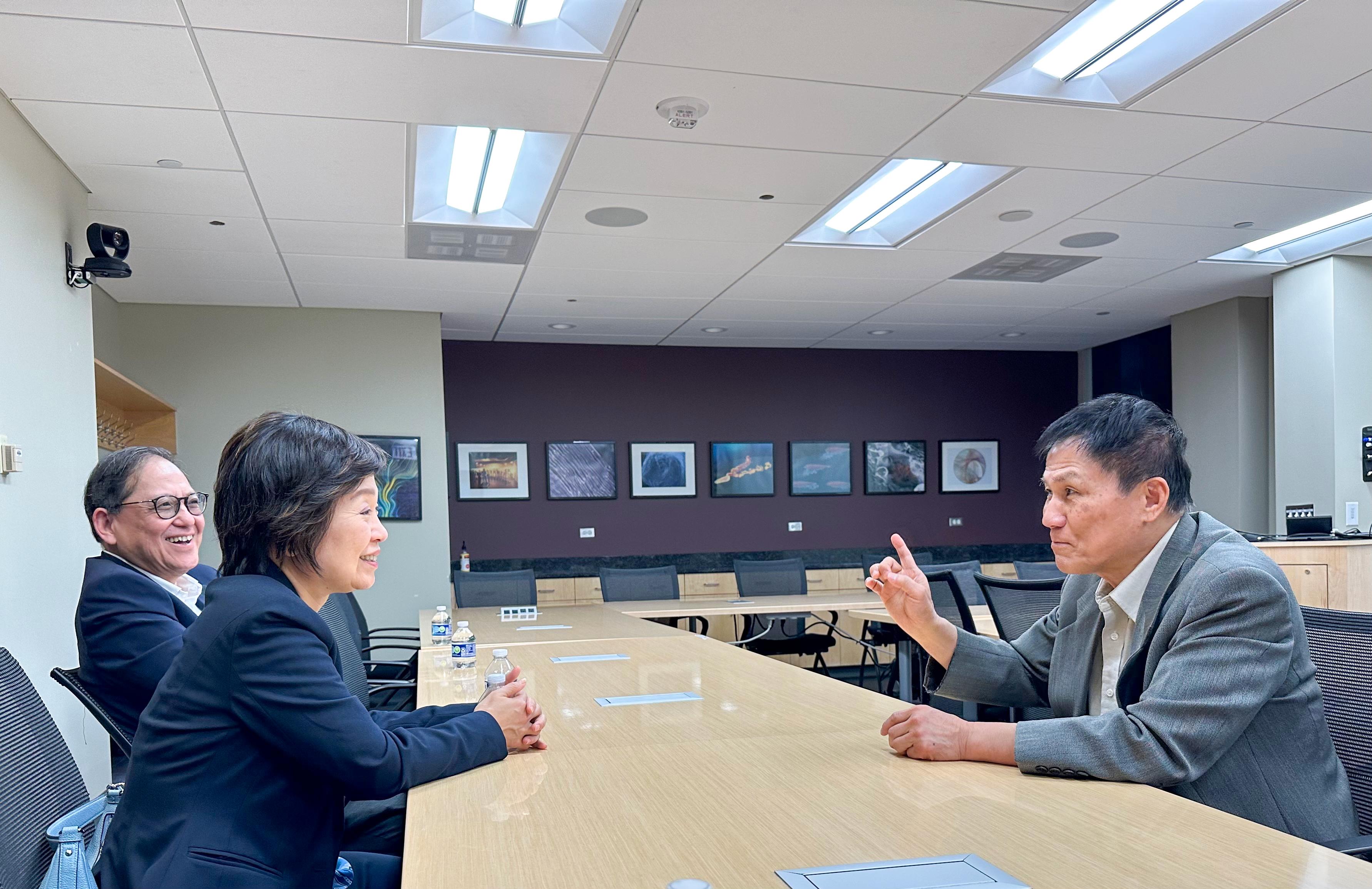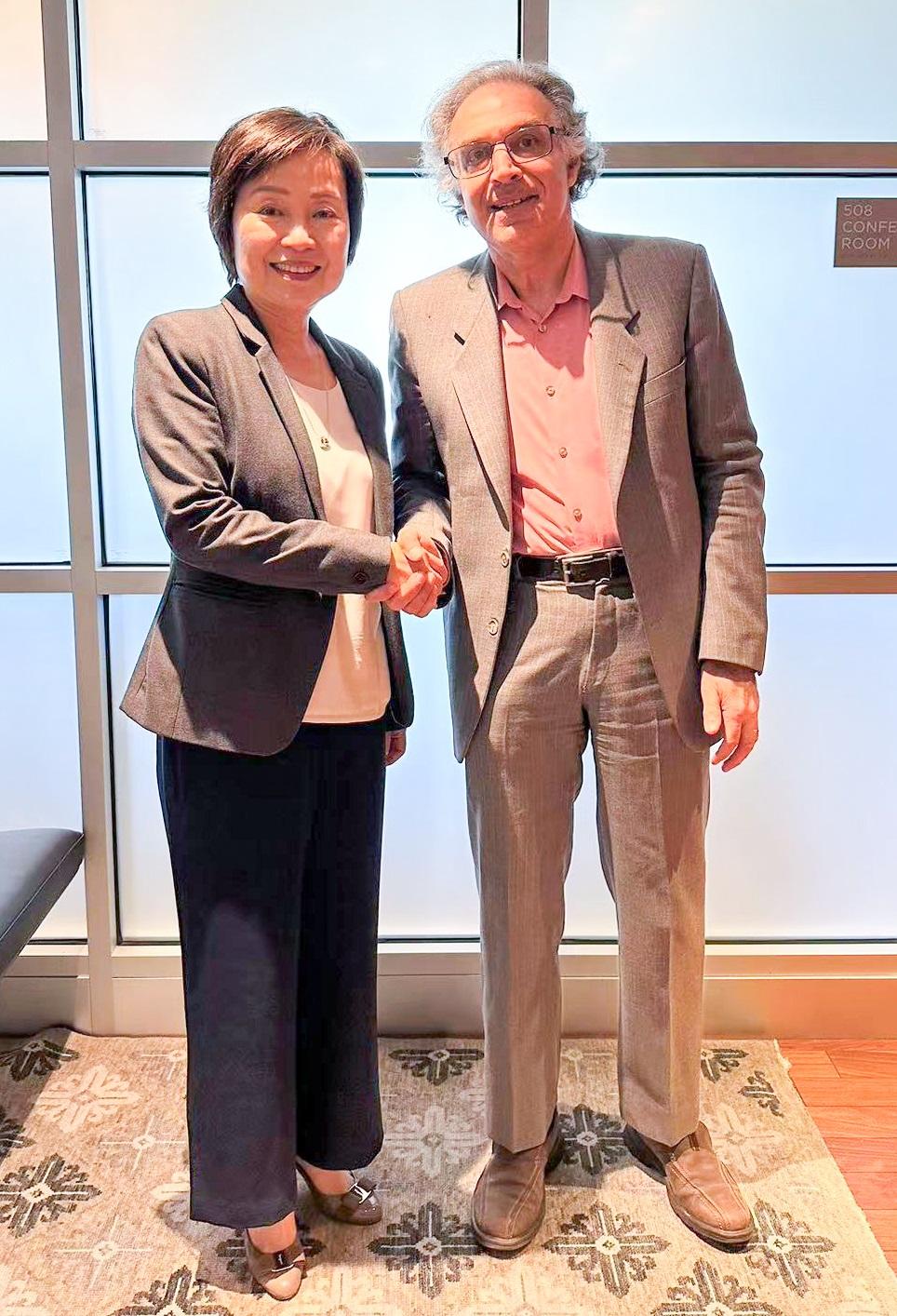LCQ9: Protective measures for victims of crime and vulnerable witnesses
Following is a question by the Hon Doreen Kong and a written reply by the Secretary for Security, Mr Tang Ping-keung, in the Legislative Council today (May 29):
Question:
It has been reported that the judges’ decisions to require the complainants to change clothes to demonstrate the acts involved in the case and to withdraw the use of protective screens by the complainants during the trials of two sexual offence cases last year have aroused public concern. Regarding the protective measures for victims of crime and vulnerable witnesses, will the Government inform this Council:
(1) whether it knows the respective numbers of applications received and cases approved by the Judiciary for the provision of protective measures (such as the use of protective screens or special passageways) for witnesses in criminal proceedings since the Judiciary’s revision in 2016 of the Practice Directions issued for the conduct of court proceedings; among the cases approved, of the number of cases in which the provision of relevant measures had been withdrawn by the presiding judges during the trials and the reasons for the withdrawals;
(2) of the work progress of the authorities in implementing the recommendations for legislative amendments in the report on Review of Substantive Sexual Offences published by Law Reform Commission of Hong Kong in December 2019;
(3) whether it knows if the Judiciary will, by drawing reference from the latest experience of overseas jurisdictions, conduct a comprehensive review and revision of the protective measures for victims in trials of sexual offence cases;
(4) whether the authorities have considered incorporating measures relating to the protection of victims of crime and vulnerable witnesses (e.g. the guidelines set out in the aforesaid Practice Directions) into the legislation, so that they can become inalienable rights that require no application;
(5) whether the authorities have studied putting in place more protective measures for victims of crime and vulnerable witnesses (e.g. requiring statement-taking to be done in one single interview, formulating rules on cross-examination allowed at trials, and introducing “independent sexual violence advisers”), so as to further mitigate “secondary damages” caused to the victims; and
(6) as it is learnt that the Police have established the Vulnerable Witness Support Cadre as a voluntary secondary-duty team since 2022 to provide support for dealing with cases involving the abuse of children and mentally incapacitated persons, whether the Police have considered expanding the scope of service to cover other adult vulnerable witnesses?
Reply:
President,
The Government has all along attached great importance to the professionalism in handling of sexual offence cases. Different departments and the Judiciary have taken a number of measures according to their professional areas to protect victims of crime and vulnerable witnesses from secondary victimisation, including provision of protection through legislation and various administrative measures.
In consultation with the Judiciary and the Hong Kong Police Force (HKPF), my consolidated reply in response to the Member’s question is as follows:
(1) Since the Judiciary’s revision of the Practice Directions concerning conduct of court proceedings in 2016 to date, the Judiciary have maintained and provided the following statistics on provision of protective measures for witnesses in criminal proceedings:
| Protective measures | Number of applications | Number of approved applications |
| Provision of screens for sexual offence cases | 766 (From 2016 to end of March 2024) |
763 |
| Use of special passageways for entering/leaving the court | 722 (From 2018 to end of March 2024) |
720 |
| Giving of evidence by live television link | 464 (From 2018 to end of March 2024) |
462 |
None of the approved applications had been revoked by the presiding judges during the trial. However, having regard to specific considerations in individual cases, the court may impose appropriate restrictions as considered applicable under the circumstances concerned, for example, whether the screens should prevent the defendant, the public, or both from seeing the witness. Of the two cases mentioned in the question, only one concerns the complainants’ application for use of protective measures (i.e. the latter case), which actually did not involve any “decision to withdraw the use of protective screens by the complainants”. Rather, the judge had ordered screening arrangements such that the screen should hide the view from public gallery only but not the view between the accused and the witness.
(2) The Law Reform Commission of Hong Kong (LRC) published a report on Review of Substantive Sexual Offences in December 2019 and, subsequently in May 2022, a report on Sentencing and Related Matters in the Review of Sexual Offences covering the subjects of four consultation papers of the LRC in the past ten-odd years, including rape and other non-consensual sexual offences, sexual offences involving children and persons with mental impairment, miscellaneous sexual offences, and sentencing and related matters in the review of sexual offences. They cover principle-based recommendations as well as those involving making substantive legislative amendments, including the creation of a range of non-consensual sexual offences (e.g. a range of new sexual offences involving children and persons with mental impairment which are gender neutral), the proposed penalties for the offences, treatment and rehabilitation of sex offenders, and a review on the Sexual Conviction Record Check (SCRC) Scheme.
The two reports have extensive coverage and contain over 70 recommendations, hence requiring the Government’s careful consideration. Regarding the recommendations on the SCRC Scheme, we will consult the Legislative Council Panel on Security on the proposed arrangements for expansion of the Scheme in June this year. As for other recommendations, the Security Bureau and the Department of Justice are studying the reports and will propose legislative amendments with reference to the development of relevant laws in other jurisdictions. We will timely conduct public consultation on the proposed legislative amendments and submit them to the Legislative Council for scrutiny.
(3) Relevant government departments and the Judiciary have implemented various measures to protect victims of crime and vulnerable witnesses. We will continue to monitor the effectiveness of the measures and keep abreast of the experience of other jurisdictions. Improvements to the arrangements will be made as and when appropriate and necessary so as to protect these persons from secondary victimisation.
(4) In accordance with the relevant Practice Directions issued by the Judiciary or relevant laws, vulnerable witnesses, including those relating to sexual offence cases, may apply to the court for protective measures in a criminal trial, including giving evidence by way of live television link, using protective screen, and/or using special passageway from the entrance of a court building to the relevant courtroom. The presiding judge will strike a balance among various relevant factors in giving directions for the use of a screen/special passageway in such trials. These factors mainly include the protection of the suspected victim (such as avoiding unnecessary embarrassment or pressure), ensuring the defendant’s right to a fair trial, and upholding open administration of justice. The experience in the past few years has shown that such approach is effective. For the time being, the Government has no plan to incorporate the guidelines in the Practice Directions into the legislation.
(5) Government departments have always adopted a series of procedures, guidelines and measures to protect victims of crime and vulnerable witnesses; on one hand to safeguard the fundamental right of defendants to a fair trial, one the other hand encourage and assist victims and witnesses to testify in court by treating them with compassion and understanding. The trauma caused to the testifying victims will also be minimised and their rights and safety are adequately protected.
The HKPF also review from time to time the handling procedures of sexual violence cases and enhance the skills and professional sensitivity of police officers in handling such cases. Depending on the needs of victims, the Police will apply, under section 79B of the Criminal Procedure Ordinance (Cap. 221), to the judge via the Department of Justice to allow victims to give evidence by live television link during criminal proceedings. Under the Witness Support Programme, HKPF would also arrange specially trained staff to take up the role of support persons and provide support services for victims of sexual violence in need. Such services include escorting the witnesses to visit the court before the trial, and accompanying them while they are testifying in court to help reduce their anxiety. The Police also introduced the one-stop service model, whereby victims of sexual offences will be arranged to receive medical treatment at public hospitals and undergo forensic examinations at the same place if circumstances permit. A police officer of the same sex who has received relevant training will be assigned to take statements so as to minimise the trauma caused to victims when they recount their cases during the investigation.
We will continue to monitor the effectiveness of the protective measures. The arrangements will be reviewed and enhanced timely so as to avoid causing harms to victims in the course of investigation.
(6) The Vulnerable Witness Support Cadre of the HKPF is composed of police officers who are specially trained to conduct video recorded interviews with vulnerable witnesses in compliance with the requirements under section 79C of the Criminal Procedure Ordinance (Cap. 221) to ensure that the video recordings are admissible as evidence in court. The legislative intent of the Ordinance is to protect two types of vulnerable witnesses, namely children and mentally incapacitated persons, including mentally incapacitated adults. As for other adult victims of sexual offences, as mentioned in paragraph 5 above, we have corresponding measures in place to provide them with appropriate support. The Government will continue to closely monitor the situation, review the measures from time to time and spare no effort in protecting all crime victims and vulnerable witnesses. read more





